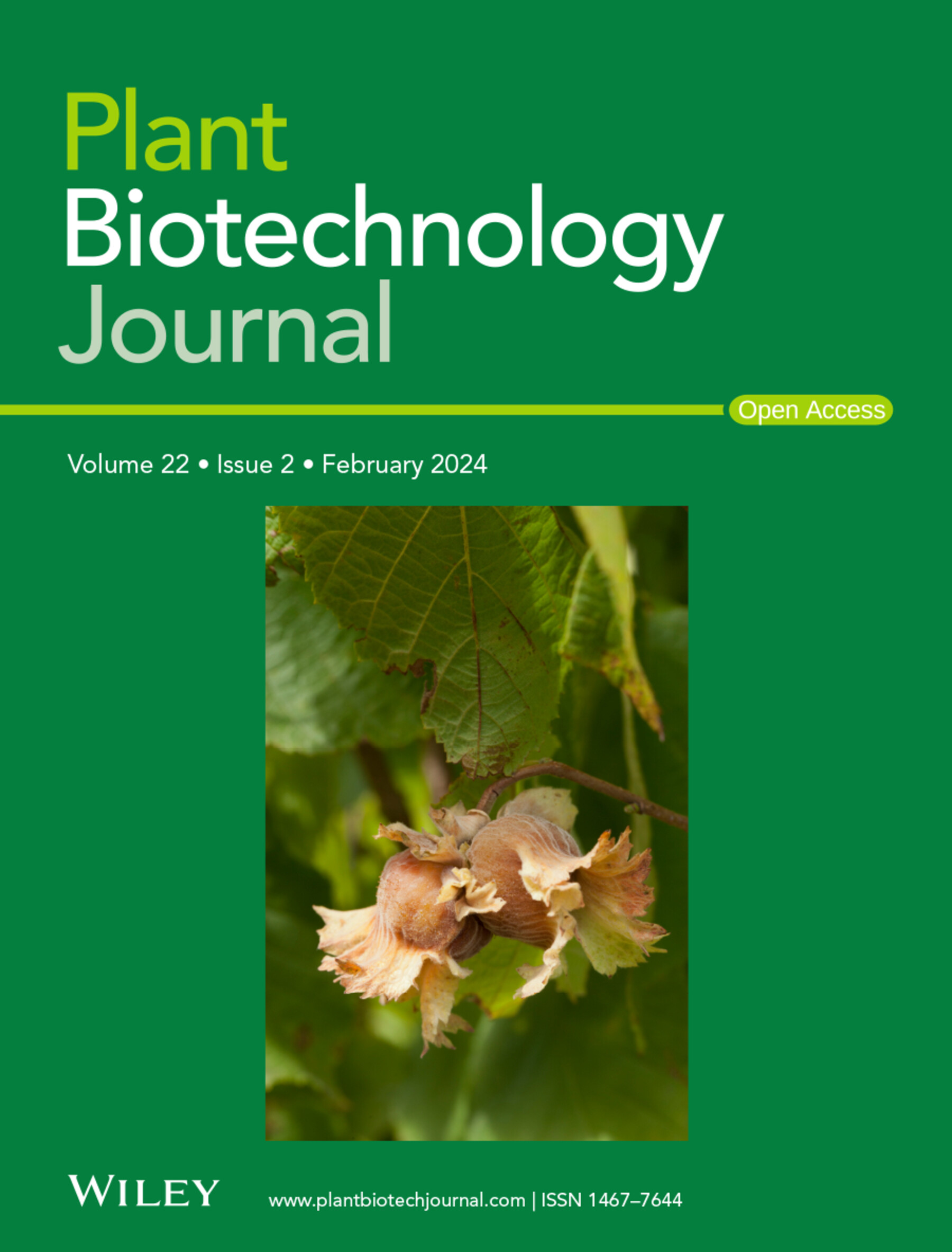Two Transcriptional Factors Antagonistically Fine‐Tune MIR1863a to Balance Resistance and Yield Traits in Rice
IF 10.5
1区 生物学
Q1 BIOTECHNOLOGY & APPLIED MICROBIOLOGY
引用次数: 0
Abstract
Immune activation usually trades off growth, leading to yield loss. Genes that coordinate resistance and yield are urgently required for crop improvement. MicroRNAs (miRNAs) provide rich candidates for coordinating resistance with yield. Here, we demonstrated that mutation of两个转录因子拮抗调控MIR1863a以平衡水稻的抗性和产量性状
免疫激活通常会牺牲生长,导致产量损失。作物改良迫切需要协调抗性和产量的基因。MicroRNAs (miRNAs)为协调抗性和产量提供了丰富的候选者。在这里,我们证明了MIR1863a突变增强了稻瘟病的抗性,而产量却没有随着穗数的增加而下降。然而,MIR1863a的过表达和突变都会导致结实率等产量性状的降低。MIR1863a的表达受到MADS51和ESR1两个转录因子的拮抗调控。MADS51激活,而ESR1在生长期间和病原体入侵时抑制叶片和穗中的MIR1863a,从而避免了因过度抗性而导致的产量损失。与mir1863a细胞系的表型一致,MADS51突变在不损失产量的情况下增强了稻瘟病抗性。此外,在MIR1863a启动子上表现出不同活性的MADS51和ESR1的单倍型与不同粳稻和籼稻的疾病表型相关,这意味着这些“转录因子- MIR1863a”模型的亚种特异性进化。综上所述,我们的研究结果揭示了一种控制miRNA数量的微调机制来平衡抗病性和产量,促进了我们对抗病性-产量平衡调节的理解。
本文章由计算机程序翻译,如有差异,请以英文原文为准。
求助全文
约1分钟内获得全文
求助全文
来源期刊

Plant Biotechnology Journal
生物-生物工程与应用微生物
CiteScore
20.50
自引率
2.90%
发文量
201
审稿时长
1 months
期刊介绍:
Plant Biotechnology Journal aspires to publish original research and insightful reviews of high impact, authored by prominent researchers in applied plant science. The journal places a special emphasis on molecular plant sciences and their practical applications through plant biotechnology. Our goal is to establish a platform for showcasing significant advances in the field, encompassing curiosity-driven studies with potential applications, strategic research in plant biotechnology, scientific analysis of crucial issues for the beneficial utilization of plant sciences, and assessments of the performance of plant biotechnology products in practical applications.
 求助内容:
求助内容: 应助结果提醒方式:
应助结果提醒方式:


